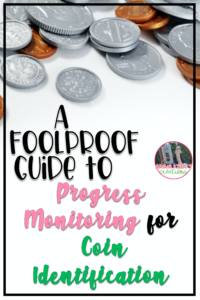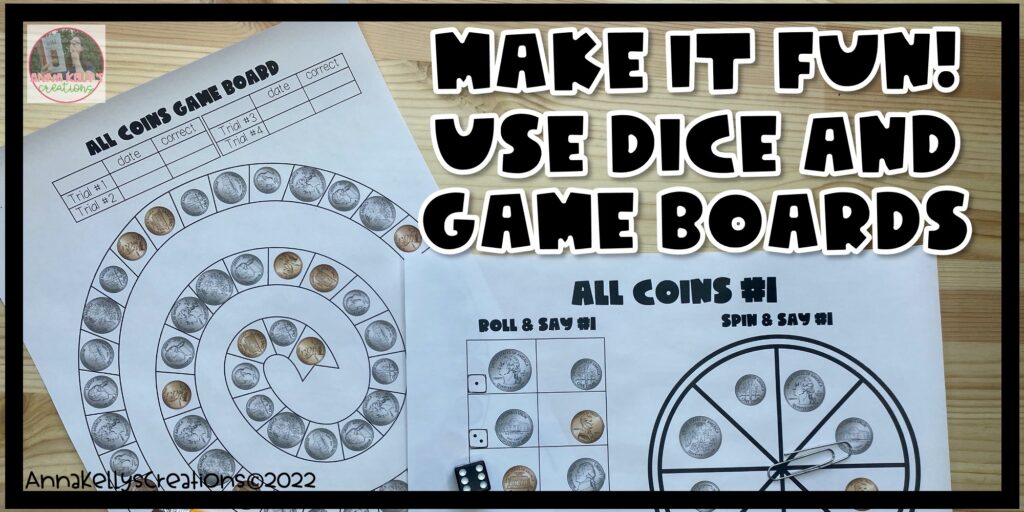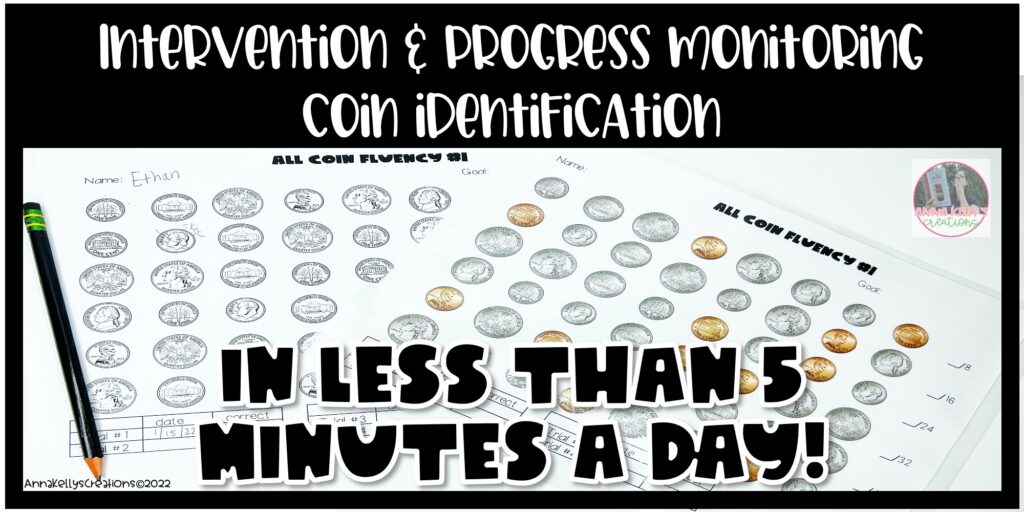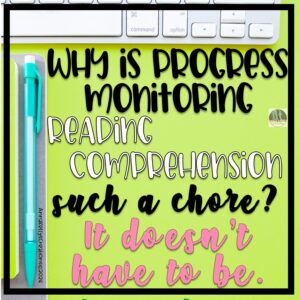If you’re teaching money and coin values as part of your math intervention, you know there’s only so many times that you can line them up and ask students to practice identifying coins and values.
“Okay, which one is a dime?”
“Where’s the penny?”
“Put your finger on the quarter.”
“Which coin is a nickel?”
“Where was the dime again?”
With only four coins to choose from, this act gets boring fast. Below is a quick and successful method I use, in less than 5 minutes a day you have your coin identification and value for math intervention done!

As I’ve worked with and studied intervention over the years, I’ve learned that fluency isn’t just for reading and number facts. That’s usually where our minds go, but there’s no reason that we can’t practice fluency to target other skills as well. That’s how I decided to start doing one minute repeated fluency checks to assess the skill of identifying coins and values. ( I use this process for other IEP goals, as well.)
What are the Benefits of Fluency Checks?
- progress monitoring for RTI (Response to Intervention)m MTSS (Multi-Tiered System Supports) or IEP goals
- individualize and write interventions and goals
 for students
for students - allow students to help control and input their goals
Sounds pretty good, right? Let’s see what it looks like in action.
*Note: Before introducing this to your special education and intervention students, consider having a few typical peer students do a cold read. This helps you have a goal in mind before giving it to the intended students.
How to Progress Monitor Counting Coins
Step 1: Gather your supplies
You’ll need:
- A print out of coins or real coins laid out in front of the student. The more coins the student has access to, the better
- A timer
- A clipboard, writing utensil, and recording sheet
Step 2: Allow students to “self study”
Give students 1 minute to self study by looking over the coins or printed sheet. Also allow students to ask any lingering questions they may have.
Step 3: Run six 10 second sprints
Each time the student finishes, they will start back at the beginning to repeat the process. Students will identify coins for 10 seconds six times in a row.
*Hint: If you’re using a paper for coin identification, consider putting it in a plastic dry erase sleeve so that you can mark how far students go in each round. If you’re using real coins, use a marker of some sort to distinguish.
Step 4: The final run
Now that students have practiced their sprints, It’s time for the final run. Set your timer for 1 minute. Have the student start at the beginning again and continue identifying coins or their values for 1 full minute. Use this score as their final data point.
Step 5: Mastery
Once students have reached their goal three times in a row, it’s time for them to find a new one to master! Yay!
Step 6: Keep practicing
It’s important to allow students to practice in low-risk, fun ways. Consider allowing students to play a game like Roll and Say. Simply assign a coin number to a number on the dice. For example, 25 cent may be a number two on a dice. As students roll the dice, have them say the coin value or name as quickly as they can. This game may sound simple, but in my experience, dice make everything more fun for students.
Linked here you can find my version of Coin Identification Fluency that I use with students. It also includes games and roll a coin fun! Click here to be linked to my store to take a look.
As you’re creating goals for your students, allow them to give their input! Goals don’t have to be something that we set for them. Let students share their thoughts and really take ownership of their goals.
There you have it! Quick money intervention in less than 5 minutes a day! Are you ready to add progress monitoring tools to your identifying coins and values unit? I can’t wait to hear how much students love this new way of learning. Share the highlights in the comments below.






